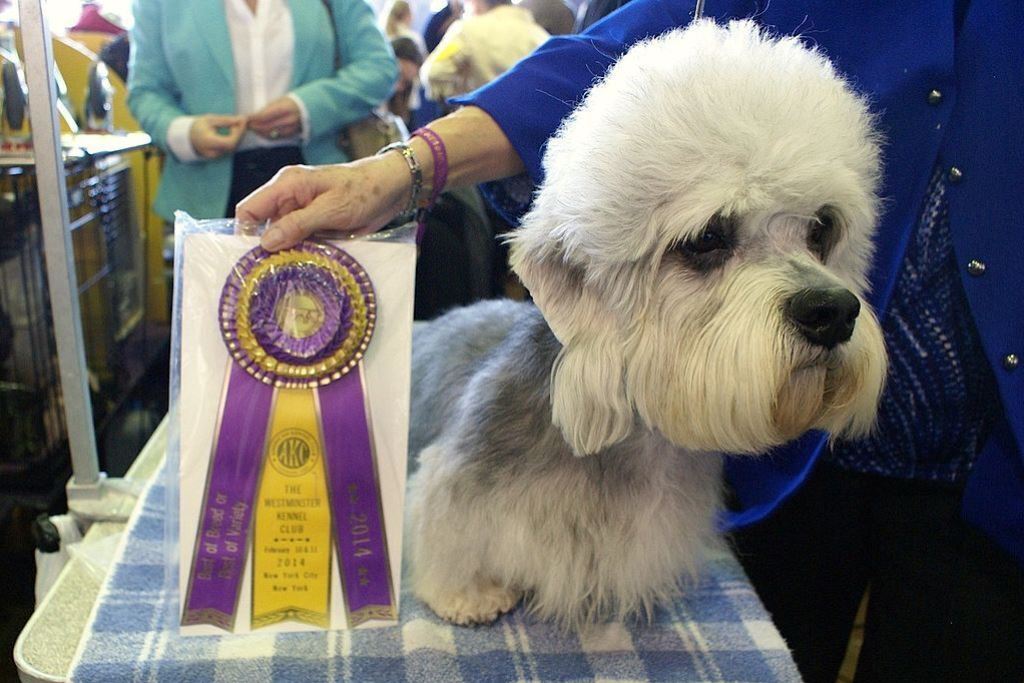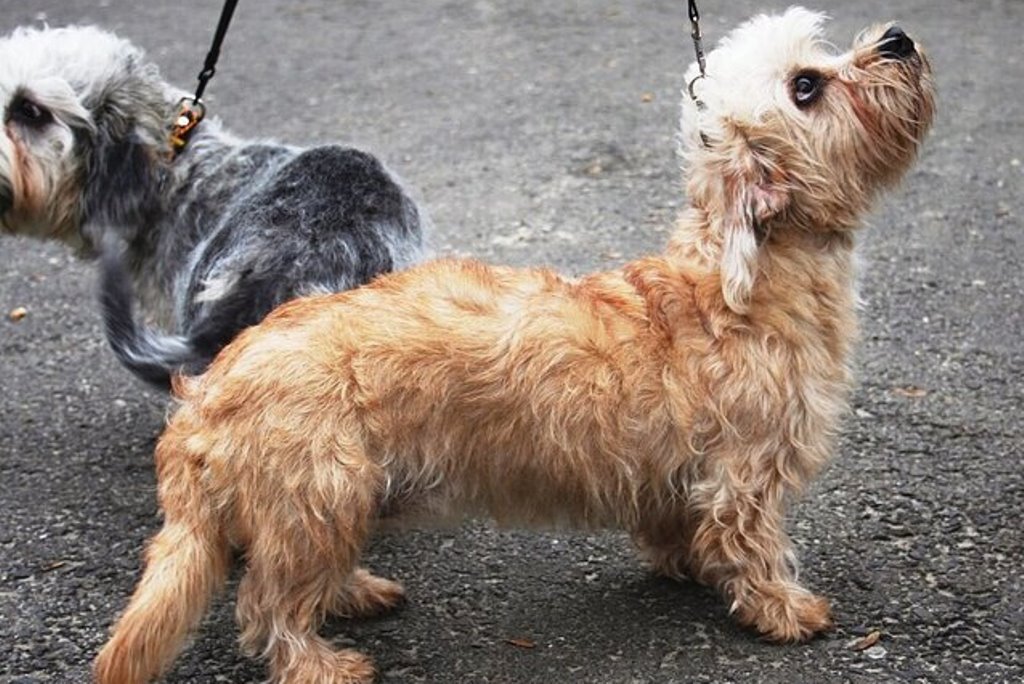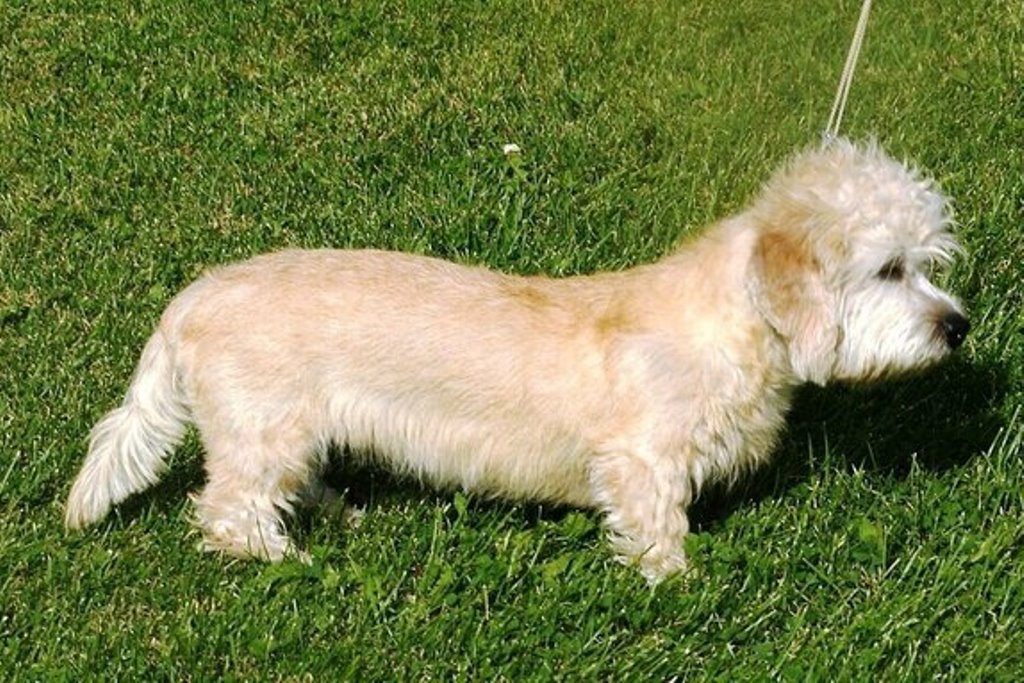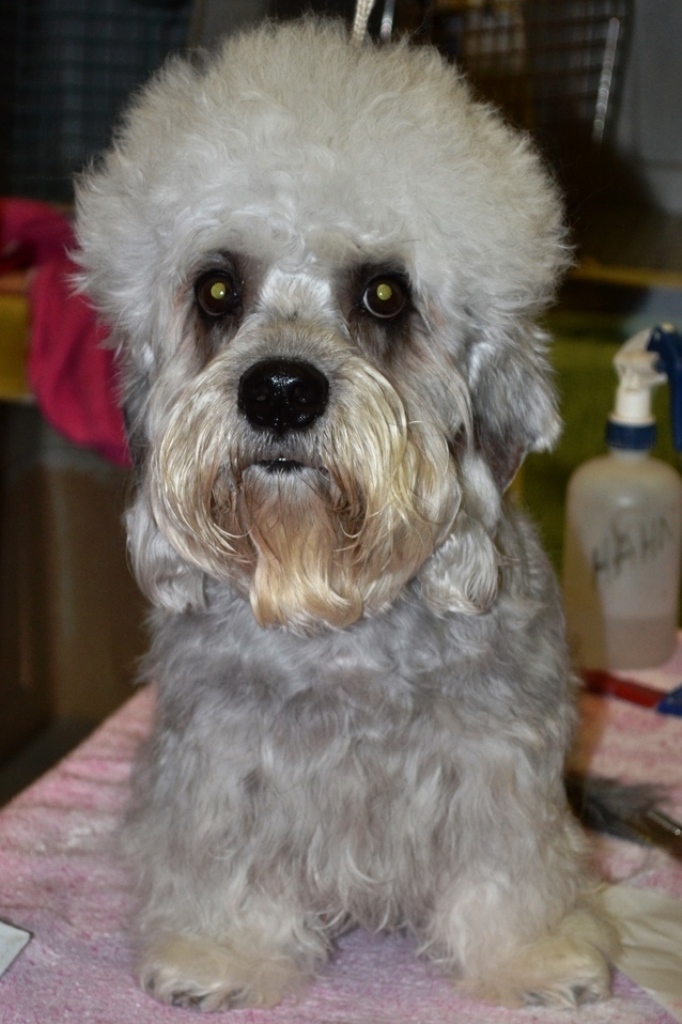
Traits and Temperament of Dandie Dinmont Terriers
The origins of the dandie dinmont terrier dog breed are Scottish. It is not the result of purposeful or scientific selection but of cross-breeding by gypsies and local hunters to obtain a dog of great courage and tenacity and good for hunting.
Its origins are very ancient, as dogs such as the French basset hounds that were brought from Normandy at the time of the conquest by William I in 1066 are thought to have influenced this breed. One legend says that all modern dandie dinmont terriers originate from a poacher's dog found in a trap on the Duke of Buccleuch's estate.
The most widely accepted theory is that he was born from a cross between Scottish, skye and Bedlington, in fact he took several characteristics from each breed.
This dog is the only one that does not take its name from where it belongs, but rather inherited it from the main character in Walter Scott's short story ‘Guido Mannering’, whose real name was Dandie Dinmont, Dandie was the nickname the writer gave him for his extreme elegance on all occasions. This fact gave this breed some popularity, but unfortunately there are few examples and it is little known, even in Great Britain.
Initially, this dog was selected for hunting badgers, otters and other small prey, but now, thanks also to its temperament, it is an excellent companion dog.
Character of the dandie dinmont terrier dog breed

The dandie dinmont terrier has some typical terrier traits; it is tenacious, has an independent spirit and is determined. However, it is also affectionate and sensitive, especially towards its owner. He is a tame dog, but he is rather stubborn and has a tendency to constantly test his owners to see how far he can go, but when he understands his limits he is an excellent companion.
He likes to play, is cheerful and compared to his ancestors his temperament has changed and calmed down, as he is no longer used for hunting but as a companion animal. However, it remains an independent dog that must often be taken out for walks, in fact it needs to do enough exercise as this prevents it from becoming obese. In fact it is a dog that eats a lot, but we will talk about this later.
With strangers it is rather wary, so it is an excellent guard dog, which does not hesitate to alert by barking as soon as it hears something out of the ordinary. Despite its small stature it is a very courageous dog that is not afraid, if necessary, to confront larger dogs or dangerous animals such as foxes. As far as living with other dogs and cats is concerned, it must be socialised early in order to have a peaceful coexistence.
Appearance of the dandie dinmont terrier dog breed

The appearance of the dandie dinmont terrier is very distinctive. It is a small dog, the height at withers for a male being 25 to 30 centimetres and weighing between 8 and 11 kilograms. It has a long, flexible body, while its limbs are short but strong with well-developed thighs. The tail is short and around 25 centimetres long. It resembles the weasel in terms of its body. Its gait is flowing, loose and decisive.
The head is larger than usual, compared to the body. The truffle is broad and black, the ears are pendulous, well set back, wide apart, adhering to the cheeks. The eyes are an intense dark hazel colour, distant and low, large, full and round with a very lively look.
The head has a very sympathetic appearance especially because of the brush-like hair on the head and the large mustachios.
The coat hair is one of the breed's typical characteristics. It has a double coat with a soft, fluffy undercoat and an outer coat that is harder but not rough, but still gives a frizzy feeling when stroked. It is found in two colours: pepper or mustard.
Health and care of the dandie dinmont terrier dog breed

As an adult, the dandie dinmont terrier is a robust dog, in the growing phase its health must be monitored very closely. Like many small dogs, it can suffer from patellar problems, and its shape makes it prone to spinal disorders. As a hereditary disease, he may suffer from eye disorders, so annual eye tests and examinations are recommended.
He is a dog that suffers a lot from the cold, so in winter it is preferable to let him sleep indoors. Its average life expectancy is about 13 years.
As far as coat care is concerned, it should be brushed at least twice a week and shorn at least twice a year.
The diet must be very well cared for and above all balanced as this breed tends to eat much more than necessary. This is also why it needs at least a couple of daily outings.






















